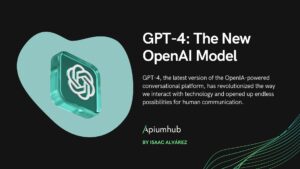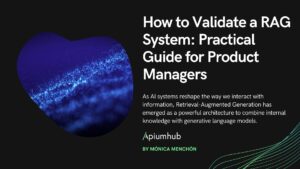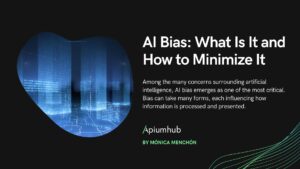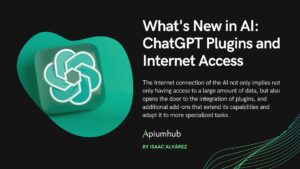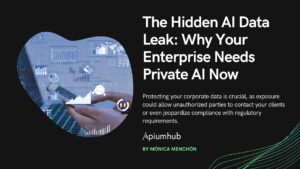Table of Contents
In the past year, avoiding hearing about AI and its transformative potential has been nearly impossible. While many understand the promise of these advancements, some remain unsure how to leverage them for tangible benefits. Concerns about complexity and cost often overshadow the possibilities.
At the same time, our society has grown increasingly focused on privacy. Millions use popular tools like ChatGPT, but they raise an important question: how can we harness the power of AI while ensuring that our data remains private and under our control?
For a Common User, What Is a RAG?
Retrieval Augmented Generation (RAG) is a powerful technology that leverages your knowledge base—your files!—to answer questions in natural language. It achieves this by integrating with a Large Language Model (LLM) system (though we’ll leave the technical details for another time).
Simply put, RAG allows you to input your data and get accurate, contextually relevant answers (in natural language) based entirely on the information you provide.
Let’s explore a practical example:
Imagine you work at a company with a PDF document outlining your time-off policy. It includes details like, ‘How many days in advance do I need to request vacation?’ or ‘How many unused days can I carry over to the next year?’
New employees often refer to this document during onboarding, but realistically, they retain only about half of the information—understandable, given the overload of all the new information they’re processing.
When policies change, it’s even harder to ensure everyone is updated. Most employees—especially long-time staff—may never revisit it.
Now, imagine having a 24/7 virtual assistant that can instantly answer any question about your policies. Not only does it provide accurate, up-to-date information, but it also responds conversationally—like a human, not like a robotic script.
Example of an employee question: How many vacation days do I have each year?
RAG Answer: Based on our holiday policies, each employee is entitled to 23 working days of vacation annually. The deadline to use your vacation is January 31 of the following year. If you plan to take more than five consecutive days off, we recommend notifying your supervisor at least two months to allow for workload adjustments.
Why Is Privacy Important?
There are many RAG implementations available on the market, but we strongly recommend choosing solutions that prioritize privacy and data ownership. In today’s digital landscape, where data breaches and misuse of information are becoming increasingly common, safeguarding your company’s knowledge is not just an option—it’s a necessity.
Your company has invested considerable time, effort, and resources into building its knowledge base. Whether it’s proprietary business practices, sensitive internal policies, or unique operational insights, this information represents a core asset. Sharing such valuable data over the internet, even inadvertently, could expose your organization to significant risks. These risks include data breaches, loss of competitive advantage, regulatory non-compliance, and even reputational damage if sensitive information falls into the wrong hands.
By choosing a RAG solution with an implementation that keeps your data secure and private, you retain complete control over how your information is used. This ensures that it serves its intended purpose—enhancing operations and providing accurate answers—without opening the door to vulnerabilities. Investing in privacy-focused solutions is an investment in the integrity, security, and long-term success of your business.
A privacy-focused RAG implementation ensures that your data remains secure, empowering your organizations to harness AI without compromising your assets.
When Do I Need to Have a RAG Integration?
Integrating a RAG tool into your company platform only makes sense if it provides clear and measurable value. The challenge lies in determining how to quantify that value effectively.
From an economic perspective—whether in terms of money or time—the calculation is straightforward: the tool costs X, but it saves Y, making it easy to assess the return on investment.
However, the psychological impact is equally significant, though less tangible. Consider the frustration employees experience when they can’t easily access the information they need or when they’re repeatedly asked to answer the same questions. A RAG solution can alleviate these pain points by streamlining access to information and reducing repetitive tasks. This can be reflected in improved employee satisfaction and engagement with the company.
Ultimately, the value of a RAG tool extends beyond mere numbers—it’s about fostering a more efficient, less frustrating, and more satisfying work environment.
Use Cases
There are countless use cases where implementing a RAG tool can significantly streamline processes and enhance efficiency. Most of these scenarios share common challenges:
- Managing extensive documentation.
- Addressing frequent and repetitive questions based on this documentation.
By tackling these pain points, a RAG solution can deliver measurable value across various industries. Let’s explore some examples of how many companies, including small and medium-sized ones, can benefit from RAG implementations:
| Industry | Value |
| Education | Transform a RAG tool into a 24/7 virtual guide to support students with campus information, policies, FAQs, and more. This allows students to focus on what truly matters—their learning. |
| Government | Enhance public service by providing users with instant access to FAQs, bureaucratic procedures, schedules, and other essential information, reducing frustration and wait times. |
| Healthcare | Empower patients and their families with on-demand access to hospital policies, FAQs, schedules, and other critical information, improving their overall experience. |
| Legal | Support legal professionals by offering instant updates and insights on the latest legal developments, helping them stay informed and efficient. |
This list showcases how a RAG implementation can deliver value across industries, addressing both operational inefficiencies and user frustrations but these are not the only ones.
RAG will be useful for any industry that requires customer support, marketing analysis, or work in product development, the opportunities are countless.
With the right use cases, RAG becomes a powerful tool to optimize workflows and improve satisfaction for users and stakeholders alike.
Conclusions
Retrieval Augmented Generation (RAG) represents a transformative technology with immense potential. Its ability to leverage proprietary data to provide accurate, context-aware answers in natural language makes it an invaluable tool for businesses and organizations seeking efficiency.
The Importance of Privacy and Data Ownership
In an era where data privacy is paramount, RAG solutions that prioritize the security and ownership of your information are essential. Companies invest heavily in building their knowledge bases, and exposing this data to external platforms not only undermines their value but also introduces significant risks.
Clear and Measurable Value
The value of RAG tools can be assessed both economically and psychologically. While financial savings and time efficiencies are easy to measure, the psychological benefits—such as reduced employee frustration and increased satisfaction—are equally important. Take both in consideration when making decisions about RAG implementation.
Solving Common Pain Points
By addressing challenges such as managing extensive documentation and answering repetitive queries, RAG tools offer practical solutions that reduce inefficiencies. They empower users to find the information they need quickly and accurately, whether it’s employees navigating internal policies or customers seeking support.
Final Thoughts
The potential of RAG technology lies not only in its ability to simplify information retrieval but also in its capacity to transform how businesses and organizations interact with their data. By choosing implementations that emphasize privacy, value, and usability, companies can unlock significant benefits while maintaining control over their most critical assets. RAG isn’t just a tool—it’s a step toward smarter, more efficient, and more user-focused operations.

